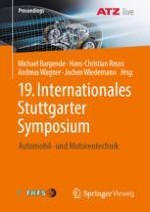In einer sich rasant verändernden Welt sieht sich die Automobilindustrie fast täglichmit neuen Herausforderungen konfrontiert: Der problematischer werdende Rufdes Dieselmotors, verunsicherte Verbraucher durch die in der Berichterstattungvermischte Thematik der Stickoxid- und Feinstaubemissionen, zunehmendeKonkurrenz bei Elektroantrieben durch neue Wettbewerber, die immer schwierigerwerdende öffentlichkeitswirksame Darstellung, dass ein großer Unterschiedzwischen Prototypen, Kleinserien und einer wirklichen Großserienproduktion besteht.Dazu kommen noch die Fragen, wann die mit viel finanziellem Einsatz entwickeltenalternativen Antriebsformen tatsächlich einen Return of Invest erbringen, wer dienotwendige Ladeinfrastruktur für eine Massenmarkttauglichkeit der Elektromobilitätbauen und finanzieren wird und wie sich das alles auf die Arbeitsplätzeauswirken wird.Für die Automobilindustrie ist es jetzt wichtiger denn je, sich den Herausforderungenaktiv zu stellen und innovative Lösungen unter Beibehaltung des hohenQualitätsanspruchs der OEMs in Serie zu bringen. Die Hauptthemen sind hierbei,die Elektromobilität mit höheren Energiedichten und niedrigeren Kosten der Batterienvoranzutreiben und eine wirklich ausreichende standardisierte und zukunftssichereLadeinfrastruktur darzustellen, aber auch den Entwicklungspfad zum schadstofffreienund CO2-neutralen Verbrennungsmotor konsequent weiter zu gehen. Auch dasautomatisierte Fahren kann hier hilfreich sein, weil das Fahrzeugverhalten dann –im wahrsten Sinne des Wortes - kalkulierbarer wird.Dabei ist es für die etablierten Automobilhersteller strukturell nicht immer einfach,mit der rasanten Veränderungsgeschwindigkeit mitzuhalten. Hier haben Start-upseinen großen Vorteil: Ihre Organisationsstruktur erlaubt es, frische, unkonventionelleIdeen zügig umzusetzen und sehr flexibel zu reagieren. Schon heute werdenStart-ups gezielt gefördert, um neue Lösungen im Bereich von Komfort, Sicherheit,Effizienz und neuen Kundenschnittstellen zu finden. Neue Lösungsansätze,gepaart mit Investitionskraft und Erfahrungen, bieten neue Chancen auf dem Weg derElektromobilität, der Zukunft des Verbrennungsmotors und ganz allgemein für dasAuto der Zukunft.
